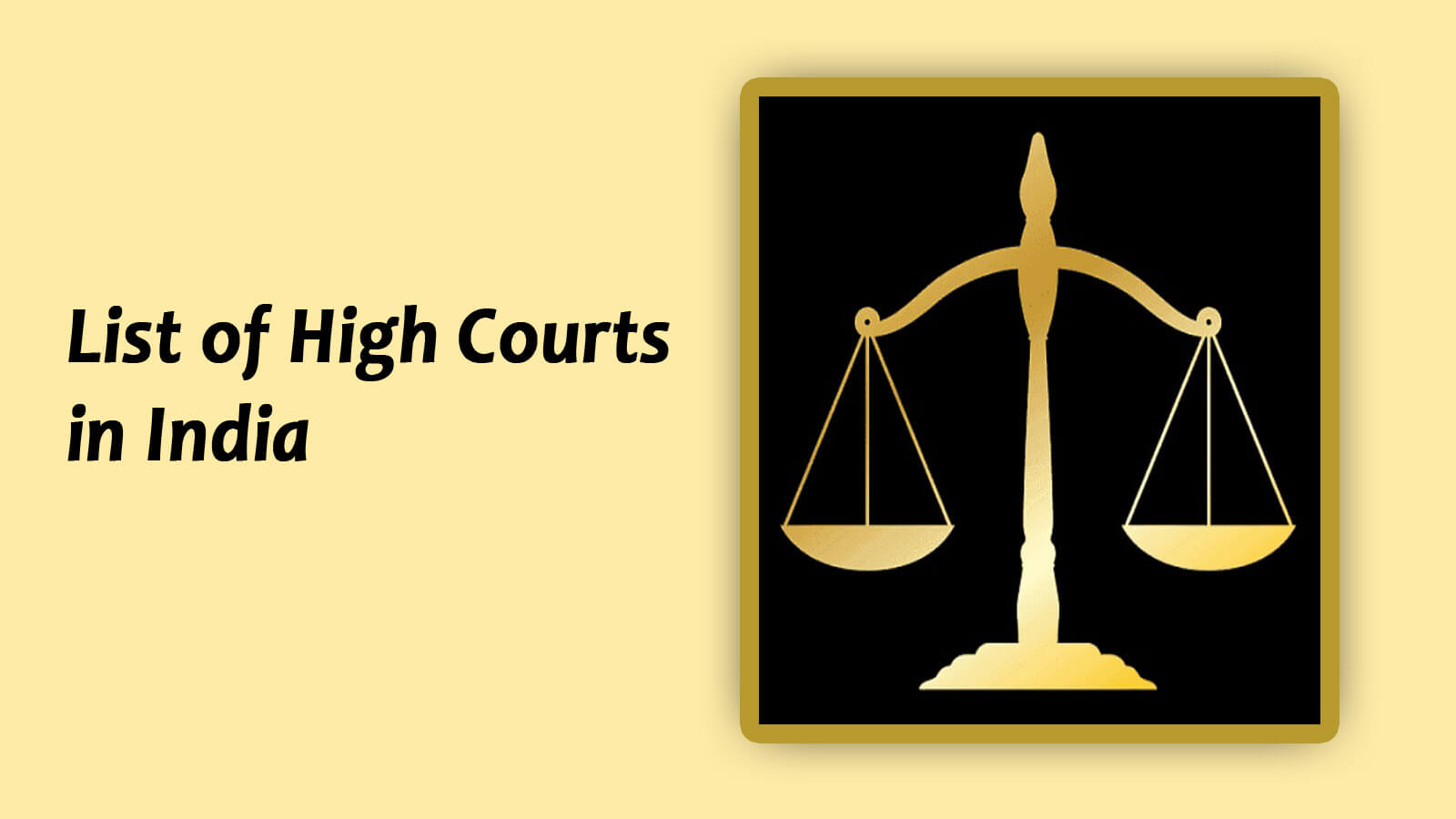
High Courts of India are the highest courts of appellate jurisdiction in each state and union territory of India. Here we are presenting the complete List of High Courts in India along with their establishment date and jurisdiction. The Calcutta High Court is the oldest high court in the country, established on 2 July 1862. According to a study conducted by Bangalore-based N.G.O, Daksh, on 21 high courts in collaboration with the Ministry of Law and Justice in March 2015, it was found that average pendency of a case in high courts in India is 3 years.
The buildings of Bombay High Court (as part of the Victorian and art deco ensemble of Mumbai) and Punjab and Haryana High Court (as part of the architectural work of Le Corbusier) are UNESCO World Heritage Sites. The work of most high courts primarily consists of appeals from lower courts and writ petitions in terms of Articles 226 and 227 of the constitution. Writ jurisdiction is also an original jurisdiction of a high court.
A high court exercises its original civil and criminal jurisdiction only if the subordinate courts are not authorized by law to try such matters for lack of pecuniary, territorial jurisdiction. High courts may also enjoy original jurisdiction in certain matters, if so designated specially by the constitution, a state or union law.
Indian High Courts List with Jurisdiction
Here is the complete list of high courts in India along with their establishment date and jurisdication details.
| Name of High Court | Established | Jurisdiction |
|---|---|---|
| Allahabad High Court | 17 March 1866 | Uttar Pradesh |
| Andhra Pradesh High Court | 1 January 2019 | Andhra Pradesh |
| Bombay High Court | 14 August 1862 | Goa, Dadra and Nagar Haveli and Daman and Diu, Maharashtra |
| Calcutta High Court | 2 July 1862 | Andaman and Nicobar Islands, West Bengal |
| Chhattisgarh High Court | 1 November 2000 | Chhattisgarh |
| Delhi High Court | 31 October 1966 | Delhi |
| Gauhati High Court | 1 March 1948 | Arunachal Pradesh, Assam, Mizoram, Nagaland |
| Gujarat High Court | 1 May 1960 | Gujarat |
| Himachal Pradesh High Court | 25 January 1971 | Himachal Pradesh |
| High Court of Jammu and Kashmir and Ladakh | 26 March 1928 | Jammu and Kashmir, Ladakh |
| Jharkhand High Court | 15 November 2000 | Jharkhand |
| Karnataka High Court | 1884 | Karnataka |
| Kerala High Court | 1 November 1956 | Kerala, Lakshadweep |
| Madhya Pradesh High Court | 2 January 1936 | Madhya Pradesh |
| Madras High Court | 15 August 1862 | Tamil Nadu, Puducherry |
| Manipur High Court | 25 March 2013 | Manipur |
| Meghalaya High Court | 23 March 2013 | Meghalaya |
| Orrisa High Court | 3 April 1948 | Odisha |
| Patna High Court | 2 September 1916 | Bihar |
| Punjab and Haryana High Court | 15 August 1947 | Chandigarh, Haryana, Punjab |
| Rajasthan High Court | 21 June 1949 | Rajasthan |
| Sikkim High Court | 16 May 1975 | Sikkim |
| Telangana High Court | 1 January 2019 | Telangana |
| Tripura High Court | 26 March 2013 | Tripura |
| Uttarakhand High Court | 9 November 2000 | Uttarakhand |
Courts under a High Court
- District Court
- District Munsiff Court
- Courts of Judicial Magistrate of First Class
- Court of Judicial Magistrate of Second Class
- E-courts
Judicial System in a State
Each state is divided into judicial districts which are presided over by a district and sessions judge. He is known as district judge when he presides over a civil case and session’s judge when he presides over a criminal case. He is the highest judicial authority below a high court judge. Below him, there are courts of civil jurisdiction known by different names in different states.
Under Article 141 of the constitution, all courts in India – including high courts – are bounded by the judgments and orders of the Supreme Court of India by precedence.
Appointment of Judges in Indian High Courts
Judges in a high court are appointed by the president of India in consultation with the chief justice of India and the governor of the state under Art 217 of the Constitution but through subsequent judicial interpretations. The primacy of the appointment process of a High Court Judge is on the hands of the Judicial Collegium. High courts are headed by a chief justice.
Rank of Chief Justice of High Court in India
The chief justices rank 14th (within their respective states) and 17th (outside their respective states) on the Indian order of precedence. The number of judges in a court is decided by dividing the average institution of main cases during the last five years by the national average, or the average rate of disposal of main cases per judge per year in that high court, whichever is higher.
High courts that handle numerous cases of a particular region have permanent benches established there. Benches are also present in states which come under the jurisdiction of a court outside its territorial limits.
Circuit Benches in a Court
Smaller states with few cases may have circuit benches established. Circuit benches (known as circuit courts in some parts of the world) are temporary courts which hold proceedings for a few selected months in a year. Thus cases built up during this interim period are judged when the circuit court is in session.
Source / reference link: https://ecourts.gov.in/ecourts_home/static/highcourts.php